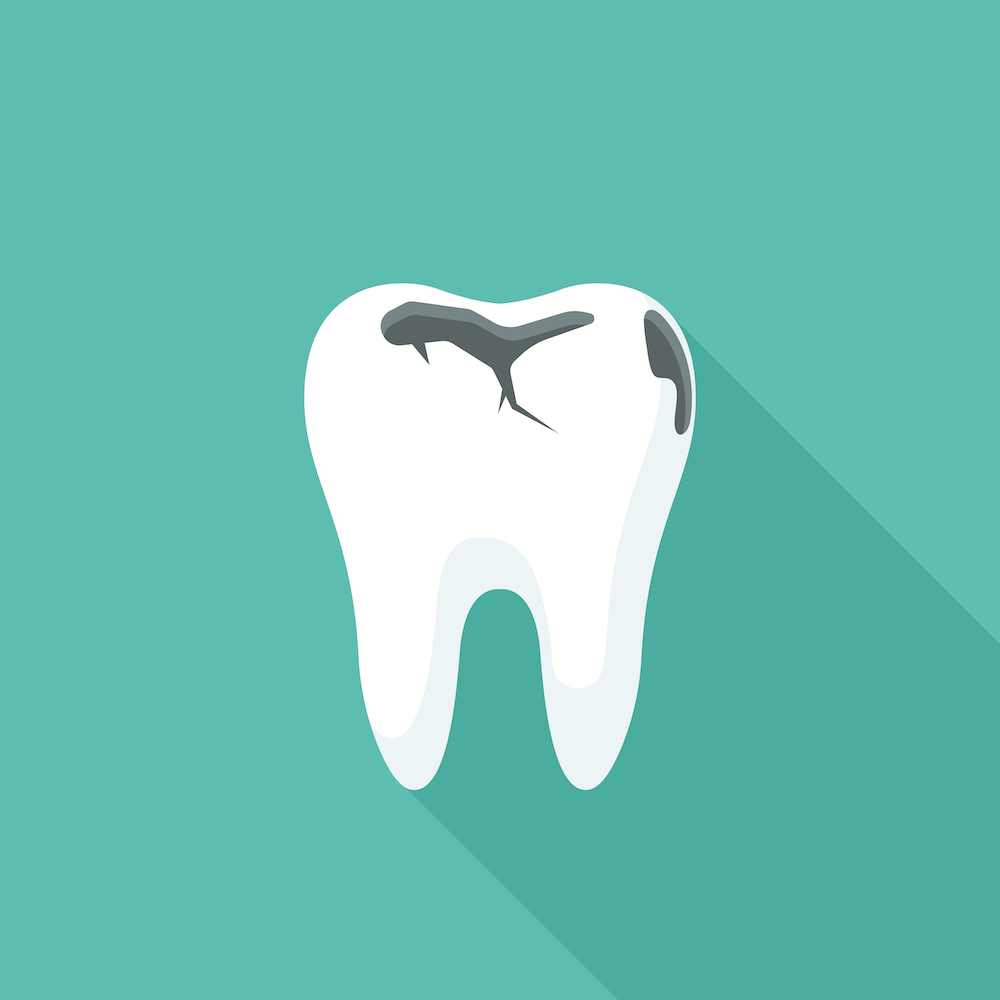Date
Have you or your children ever had a cavity? Tooth decay is one of the most common oral health issues, yet many patients don’t understand why cavities form or how to prevent them. Here’s a look at why tooth decay happens, easy ways to prevent cavities and treatment options.
What Causes Cavities?
A cavity is a hole in the tooth, but it doesn’t just get there overnight. The decay process begins when we don’t clean food and bacteria from our teeth. Over time, this buildup attaches to the teeth and forms a sticky substance known as plaque. As the plaque accumulates in the mouth, harmful bacteria can produce acids that break down the enamel of the teeth, which could cause a small hole in a tooth.
Without treatment, the plaque and bacteria can progress to penetrate and destroy the inner tooth material (i.e., pulp). The dental pulp houses a tooth’s blood supply and nerves. When it becomes increasingly irritated, it is common to experience sensitivity, toothache and pain when biting.
Simple Ways to Prevent Cavities
The best way to keep cavities at bay is to be diligent and consistent in your daily oral hygiene. Brush at least twice daily with fluoride toothpaste. Also, floss daily to remove food debris from between teeth and along the gum line.
Aside from great at-home dental care, your diet can also help guard against decay. Eat plenty of tooth-healthy foods such as fresh fruits, vegetables, cheeses and lean meats. Limit your consumption of sugary beverages that encourage decay, and avoid frequent snacking throughout the day to prevent repeated acid attacks on the teeth.
Tooth Decay Treatment
Tooth decay doesn’t always cause symptoms. That’s why it is important to visit your dentist twice a year for checkups and cleanings.
Common signs of tooth decay include:
- Tooth pain that occurs suddenly
- Pain when biting
- Teeth that are sensitive to hot, cold, or sweet foods and drinks
- Stains on the surface of a tooth that are brown, black or white in appearance
- Noticeable holes in one or more teeth
In many cases, a traditional filling is the best option for treating a cavity before the damage spreads. To get a filling, your dentist will first remove the decayed portion from the tooth and clean the area of debris. Then the dentist will fill the prepared tooth with a special material (such as tooth-colored resin or porcelain) to restore the tooth’s strength, appearance and function.
For severe decay, a dental crown may be used to repair the damage and cover the repaired portion of the tooth. In some cases, if a tooth is significantly damaged from decay, a root canal may be required to save the tooth.
Bottom line: When it comes to guarding teeth against cavities, prevention is always the best strategy. Brushing your teeth twice a day, flossing daily and practicing tooth-friendly eating habits can all have a positive impact on your oral health — as well as your overall health. If you suspect tooth decay, don’t wait to see your dentist until your next scheduled appointment. Contact your dentist right away to prevent pain and damage to your teeth.


 703-734-2750
703-734-2750








